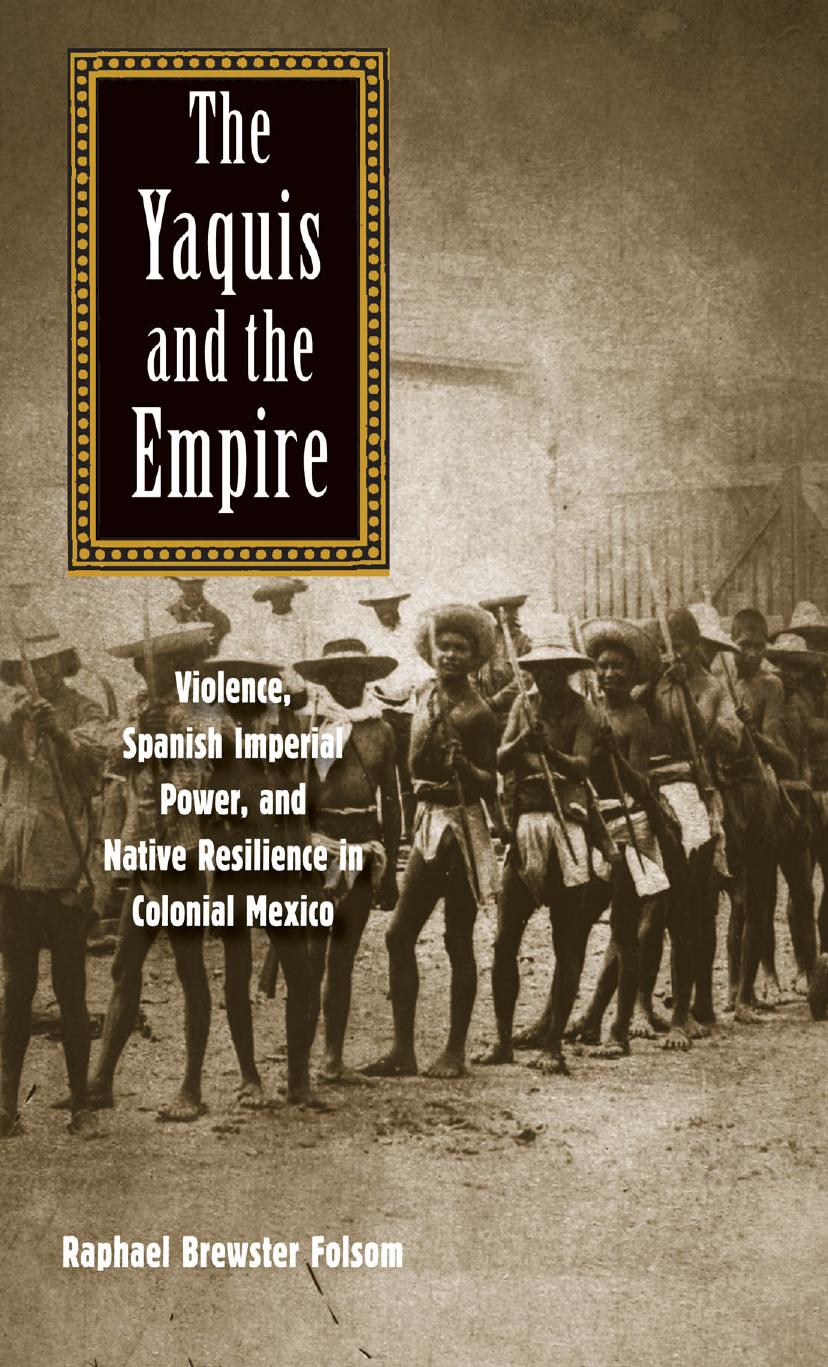The Yaquis and the Empire: Violence, Spanish Imperial Power, and Native Resilience in Colonial Mexico by Raphael Brewster Folsom

Author:Raphael Brewster Folsom [Folsom, Raphael Brewster]
Language: eng
Format: epub, pdf
Tags: history, Native American, Latin America, Central America, Social Science, Ethnic Studies, Native American Studies
ISBN: 9780300210767
Google: EXAeBQAAQBAJ
Publisher: Yale University Press
Published: 2014-11-11T00:24:40.396523+00:00
6
âNOW GOD WANTS ALL THIS TO ENDâ: THE SHATTERING OF THE COLONIAL PACT, 1740â1744
Where fortuna and virtú do their damnedest, only the details reveal the reason for the result.
âJohn Womack, âThe Mexican Revolutionâ
On January 21, 1740, a black slave named Francisco Parralo told Governor Huidobro the tale of his captivity among the Yaqui rebels. Placed under oath and interrogated in the mining town of Ãlamos, Parralo recalled his journey out of Sonora carrying one hundred marks of silver for his owner, Francisco Rojo. Riding south with a train of three mules toward Rojo's home in Culiacán, Parralo was assaulted by five hundred Yaquis in a place called El Sauze, near the Mayo River. The rebels took the silver and supplies Parralo was transporting and were at the point of killing him when one of the rebels took pity on him and let him go. Parralo had heard of another band of Yaqui rebels in the area, so he fled inland toward the sierras. Traveling by night on back roads, he came to the town of Tepahui, some eighteen miles up the Mayo River, not realizing that the inhabitants of this town were also in revolt. They captured and beat Parralo and held him for three days. They took him to the Mayo town of Camoa and then to another Mayo town called Tesia. There he was pressed into service as a slave of a Yaqui rebel leader named Nicolás and was given the role of drummer for the rebel army. He stayed with the rebels for several weeks more and learned much about the rebel movement. He told Huidobro that a Yaqui from Rahum named Juan Calixto Ayamea had become the leader of the rebels and that Ayamea was convinced Huidobro had murdered the Yaqui governors who had left to plead their case in Mexico City. (They would in fact return unharmed later in 1740.) The rebels had taken revenge for Huidobro's supposed betrayal by sacking numerous towns near the Yaqui River and killing dozens of Spaniards. Ayamea and his men planned to besiege Ãlamos, where Governor Huidobro was now gathering his forces. Huidobro must have been alarmed to learn that the rebelsâ fondest hope was to capture him and to force him to run barefoot to the Yaqui mission and there to whip him in retaliation for all his supposed misdeeds.1
Asked about the methods and motives of the rebels, Parralo told a frightening tale. The rebels called Ayamea their captain general, and his word was law among the Yaquis, Mayos, and other peoples in rebellion. Parralo made it clear that the rebels were both highly organized and had a distinctive cultural agenda. Each rebel town had named captains and other military officials. âTheir constant occupation,â Parralo recalled, âis to dance and sing in celebration of their victories with spoils taken from Spaniards they have killed, such as their scalps.â The rebels stole cattle and church decorations and made sacred vestments into women's clothing: âThe enemies make church decorations into garments, and their women use sacred albs as shirts.
Download
The Yaquis and the Empire: Violence, Spanish Imperial Power, and Native Resilience in Colonial Mexico by Raphael Brewster Folsom.pdf
This site does not store any files on its server. We only index and link to content provided by other sites. Please contact the content providers to delete copyright contents if any and email us, we'll remove relevant links or contents immediately.
| Africa | Americas |
| Arctic & Antarctica | Asia |
| Australia & Oceania | Europe |
| Middle East | Russia |
| United States | World |
| Ancient Civilizations | Military |
| Historical Study & Educational Resources |
Machine Learning at Scale with H2O by Gregory Keys | David Whiting(4190)
Never by Ken Follett(3797)
Fairy Tale by Stephen King(3221)
The Man Who Died Twice by Richard Osman(2997)
Oathbringer (The Stormlight Archive, Book 3) by Brandon Sanderson(2896)
Will by Will Smith(2794)
Rationality by Steven Pinker(2291)
The Dark Hours by Michael Connelly(2246)
Can't Hurt Me: Master Your Mind and Defy the Odds - Clean Edition by David Goggins(2229)
The Dawn of Everything: A New History of Humanity by David Graeber & David Wengrow(2123)
Friends, Lovers, and the Big Terrible Thing by Matthew Perry(2123)
Principles for Dealing With the Changing World Order: Why Nations Succeed and Fail by Ray Dalio(1974)
HBR's 10 Must Reads 2022 by Harvard Business Review(1778)
A Short History of War by Jeremy Black(1763)
Go Tell the Bees That I Am Gone by Diana Gabaldon(1689)
515945210 by Unknown(1602)
A Game of Thrones (The Illustrated Edition) by George R. R. Martin(1591)
Kingdom of Ash by Maas Sarah J(1529)
443319537 by Unknown(1471)
